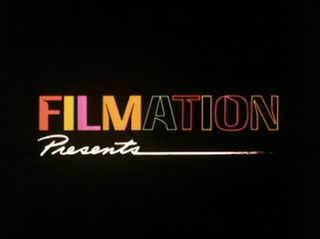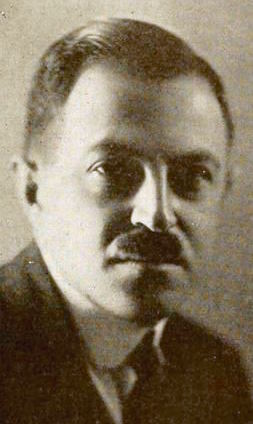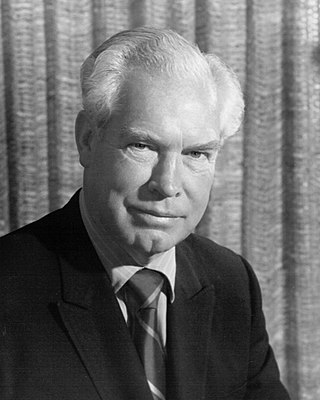Related Research Articles

Hanna-Barbera was an American animation studio and production company that was active from 1957 until it was absorbed into Warner Bros. Animation in 2001. It was founded on July 7, 1957, by William Hanna and Joseph Barbera following the decision of Metro-Goldwyn-Mayer (MGM) to close its in-house cartoon studio, and was formerly headquartered on Cahuenga Boulevard from 1960 until 1998 and at the Sherman Oaks Galleria in Sherman Oaks, both in Los Angeles, California.

Filmation Associates was an American production company that produced animation and live-action programming for television from 1963 until 1989. Located in Reseda, California, the animation studio was founded in 1962. Filmation's founders and principal producers were Lou Scheimer, Hal Sutherland and Norm Prescott.

United Productions of America, better known as UPA, was an American animation studio and later distribution company founded in 1941 as Industrial Film and Poster Service by former Walt Disney Productions employees. Beginning with industrial and World War II training films, UPA eventually produced theatrical shorts for Columbia Pictures such as the Mr. Magoo series. In 1956, UPA produced a television series for CBS, The Boing-Boing Show, hosted by Gerald McBoing Boing. In the 1960s, UPA produced syndicated Mr. Magoo and Dick Tracy television series and other series and specials, including Mister Magoo's Christmas Carol. UPA also produced two animated features, 1001 Arabian Nights and Gay Purr-ee, and distributed Japanese films from Toho Studios in the 1970s and 1980s.
The golden age of American animation was a period in the history of U.S. animation that began with the popularization of sound cartoons in 1928 and gradually ended from 1957 to 1969, where theatrical animated shorts began losing popularity to the newer medium of television animation since in 1957, produced on cheaper budgets and in a more limited animation style by companies such as Terrytoons, UPA, Paramount Cartoon Studios, Jay Ward Productions, Hanna-Barbera, DePatie-Freleng, Rankin/Bass and Filmation. In artefact, the history of animation became very important in the United States.
Animation in the United States in the television era was a period in the history of American animation that slowly set in with the decline of theatrical animated shorts and the popularization of television animation during the late 1950s to 1960s, peaked in the 1970s, and ended in the mid-late 1980s. This era is characterized by low budgets, limited animation, an emphasis on television over the theater, and the general perception of cartoons being primarily for children. Due to the perceived cheap production values, poor animation, and mixed critical and commercial reception, this era is sometimes referred to as the Dark Ageof American animation by critics.
Modern animation in the United States from 1987 to 2004 is referred to as the renaissance age or Silver Age of American animation. During this period, many large American entertainment companies reformed and reinvigorated their animation departments, following a dark age during the 1970s to mid 1980s. During this time the United States had a profound effect on global or worldwide animation.

Max Fleischer was an American animator, inventor, film director and producer, and studio founder and owner. Born in Kraków, Fleischer immigrated to the United States where he became a pioneer in the development of the animated cartoon and served as the head of Fleischer Studios, which he co-founded with his younger brother Dave. He brought such comic characters as Koko the Clown, Betty Boop, Popeye, and Superman to the movie screen, and was responsible for several technological innovations, including the rotoscope, the "follow the bouncing ball" technique pioneered in the Ko-Ko Song Car-Tunes films, and the "stereoptical process". Film director Richard Fleischer was his son.
The term independent animation refers to animated shorts, web series, and feature films produced outside a major national animation industry.
While the history of animation began much earlier, this article is concerned with the development of the medium after the emergence of celluloid film in 1888, as produced for theatrical screenings, television and (non-interactive) home entertainment.

Spümcø, Inc. was an American animation studio that was active from 1989 to 2005 and based in Los Angeles, California. The studio was best known for working on the first two seasons of The Ren & Stimpy Show for Nickelodeon and for various commercials. The studio won several awards, including an Annie Award for Best Animated Short Subject for the music video of the song "I Miss You" by Björk.
Animated films in the United States date back to at least 1906 when Vitagraph released Humorous Phases of Funny Faces. Although early animations were rudimentary, they rapidly became more sophisticated with such classics as Gertie the Dinosaur in 1914, Felix the Cat, and Koko the Clown.

A short film is a film. The Academy of Motion Picture Arts and Sciences defines a short film as "an original motion picture that has a running time of 40 minutes or less, including all credits". In the United States, short films were generally termed short subjects from the 1920s into the 1970s when confined to two 35 mm reels or less, and featurettes for a film of three or four reels. "Short" was an abbreviation for either term.

Out of the Inkwell is an American animated film series of the silent era. It was produced by Max Fleischer from 1918 to 1929 and was called The Inkwell Imps at the end of that period.

William Denby Hanna was an American animator, cartoonist and occasional musician who was the creator of Tom and Jerry as well as the voice actor for the two titular characters. Alongside Joseph Barbera, he also founded the animation studio and production company Hanna-Barbera.
William Moritz, film historian, specialized in visual music and experimental animation. His principal published works concerned abstract filmmaker and painter Oskar Fischinger. He also wrote extensively on other visual music artists who worked with motion pictures, including James and John Whitney and Jordan Belson; Moritz also published on German cinema, Visual Music, color organs, experimental animation, avant-garde film and the California School of Color Music.

The Metro-Goldwyn-Mayer cartoon studio was an American animation studio operated by Metro-Goldwyn-Mayer (MGM) during the Golden Age of American animation. Active from 1937 until 1957, the studio was responsible for producing animated shorts to accompany MGM feature films in Loew's Theaters, which included popular cartoon characters Tom, Jerry, Droopy, Butch, Spike, Tyke, and Barney Bear.
The International Tournée of Animation was an annual touring program of animated films that started in 1965 as The First Festival of Animated Film with each selected and assembled from films from many countries around the world and which existed from the 1970s to the 1980s-90s.
The history of Hungarian animation begins in 1914 and carries through to the modern day. Starting with short promotional cartoons prior to the two World Wars, Hungarian animation underwent a sporadic and halting development during the turbulent war years which were characterized in large part by the emigration of much of the field's top talent. This exodus slowed dramatically during the 1950s when the Hungarian Communist Party took power and the Iron Curtain took shape.

Experimental animation is a form of animation in which motion pictures have their own rhythm and movement where it has no narration or a specific structure in animated films. It is considered to be subjective and non-linear that deals with philosophic and spiritual concerns that the artists and film-makers convey.
Arthouse animation is a combination of art film and animated film.
References
- ↑ The Film-Makers Cooperative
- ↑ Film Restoration Initiative
- ↑ Columbia Daily Spectator 23 March 1987 —— Columbia Spectator
- ↑ Animation celebration - CineFiles
- ↑ "An Interview With George Griffin". www.awn.com.
- ↑ Independent Frames: Bodymania|Experimental Cinema
- ↑ Experimental Animation Show - Nitehawk Cinema
- ↑ Amidi, Amid (March 30, 2012). "Animated Shorts by George Griffin". Cartoon Brew.
- ↑ I Have a Question George Griffin|Animation World Network
- ↑ A Little Routine, by George Griffin (Preview) on Vimeo